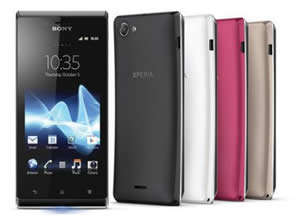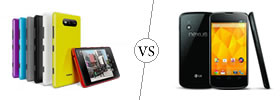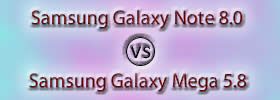Difference between LG Optimus L5 II, L5 II Dual and Sony Xperia J
Key Difference: The LG Optimus L5 II and its counter part LG Optimus L5 II Dual are two entry-level smartphones by the company. The LG Optimus L5 II and L5 II Dual are quite similar to each other but differ in certain places, including looks. The device comes with a 4-inch True IPS LCD capacitive touch screen that offers around 233 ppi pixel density. Xperia J was announced in October 2012 as a cheaper variant of the Xperia T, resulting in the phone sporting a similar design to the T. The Xperia J features a 4-inch scratch-resistant TFT touchscreen that offers a pixel density of 245.

LG has recently added a new phone series to its line-up. Following the original LG Optimus L series, the new phones include LG Optimus L3 II, LG Optimus L5 II and LG Optimus L7 II. The LG Optimus L5 II and its counter part LG Optimus L5 II Dual are two entry-level smartphones by the company. Although review websites say that the company has managed another miss, many users disagree and have enjoyed the phone specifically because of its cheap price.
The LG Optimus L5 II and L5 II Dual are quite similar to each other but differ in certain places, including looks. The Optimus L5 II has a bar format that has an oval hardware Home button on the front nestled right under the screen. This button is flanked by the Menu and Back capacitive buttons. The Optimus L5 II Dual, however, has four capacitive buttons Back, Home, Menu and the last button allows switching between the two SIM cards. The small design of both the phones is quite comfortable to hold and is also to use only with one hand. The buttons are also placed to make the device user friendly.
The power button is placed on the right side of the device, while the left side houses the volume rocker and a customizable button that is initially customized to Quick Note. The 3.5 mm jack is on the top of the device, while the USB charging port is on the bottom. The back of the device has the camera on the left side along with the LED flash on the bottom of it. The loudspeaker grille can be found on the bottom right corner. The company has given the back a ‘fake’ metallic look that can be passed of for a metallic back from far away. However, the back is made of plastic and has a little cheap feeling to it. The hardware Home button on the L5 II has LED behind it that illuminates while charging and also lights up different colors for different notifications.
 The device comes with a 4-inch True IPS LCD capacitive touch screen that offers around 233 ppi pixel density. The screen has decent resolution and clarity for the price. The phone is quite light and weighs around 103 grams for both models. Both the models come with Android 4.1.2 Jelly Bean out of the box and have been customized by Optimus 3.0 UI. The major difference between the two devices is the L5 II Dual’s ability to support dual SIM cards.
The device comes with a 4-inch True IPS LCD capacitive touch screen that offers around 233 ppi pixel density. The screen has decent resolution and clarity for the price. The phone is quite light and weighs around 103 grams for both models. Both the models come with Android 4.1.2 Jelly Bean out of the box and have been customized by Optimus 3.0 UI. The major difference between the two devices is the L5 II Dual’s ability to support dual SIM cards.
Both the devices are powered by 1 GHz single core processor, that results in lag if playing high-res demanding games. It also offers 512 MB RAM. The phones come with 4 GB internal storage capacity, of which only 1.75 GB is available to the user but, it can be expanded by 32 GB using a microSD card. The 1.75 GB still results in very less memory as Jelly Bean does not allow users to shift apps to the SD card. Both the devices come only with a 5 MP primary camera with a LED flash. The camera offers basic features such as geo-tagging, shot modes and a Cheese Shutter (that takes a photo when users say cheese). The camera also have VGA video taking capability.
The phone is powered by a removable Li-Ion 1700 mAh battery, which the company touts provides almost 10 hours of talktime on 3G network. The company has also provided with 50 GB of cloud storage and L5 II Dual offers a very cool feature known as On Screen Phone. This feature allows the phone to connect to a computer using USB or Wi-Fi, the user can then completely control the phone using the mouse and the keyboard. The application comes in the form of the phone on the screen and the user can also control the volume as well as the power buttons. The feature is a benefit for people that work on their computers continuously.
 Xperia is a well known brand of smartphones that are a part of the Sony Mobile. The Xperia brand was initially a collaboration with Ericsson but has since then been dissolved. Now, Sony has single handedly taken it upon itself to ship out new phones, while maintaining the level of quality and design of the older versions. In order to garner response for its new line of smartphones, the company started marketing the Sony Xperia T as the Bond phone, which is featured in the movie Skyfall. Xperia J is the shy, younger brother of the Bond phone, and is also cheap to boot.
Xperia is a well known brand of smartphones that are a part of the Sony Mobile. The Xperia brand was initially a collaboration with Ericsson but has since then been dissolved. Now, Sony has single handedly taken it upon itself to ship out new phones, while maintaining the level of quality and design of the older versions. In order to garner response for its new line of smartphones, the company started marketing the Sony Xperia T as the Bond phone, which is featured in the movie Skyfall. Xperia J is the shy, younger brother of the Bond phone, and is also cheap to boot.
The Xperia J was announced in October 2012 as a cheaper variant of the Xperia T, resulting in the phone sporting a similar design to the T. The Xperia J features a 4-inch scratch-resistant TFT touchscreen that offers a pixel density of 245. The pixel density is the not the best among the contenders, but that does not hinder the high-res display that is visible on the phone. The display shows quite smart and sharp images, with very accurate color representation. The display also has excellent viewing angles and does is less reflective under sunlight.
The design of the phone is also quite similar to Xperia T. The phone comes with a plastic chassis that has a sturdy built. The Xperia J has an arched back similar to Xperia Arc series, which is pleasing to hold and grip. The silver plastic lining that graces the other Xperia series has been shifted to the bottom and acts as a second LED indicator during calls. The phone is also quite light, weighing only 124 grams. The Timescape UI is very similar to the original Google Android UI and basically seems like cheap imitations. The phone has three capacitive buttons on the bottom of the screen, Back, Home and Menu buttons. The buttons are placed on the far bottom of the device, making it more prone for the user to drop the device. The top of the device houses the 3.5mm jack, while the left side has the USB/charging port. The right side of the device is quite busy with the power/lock key on the top right hand and the volume rocker just below the power key.
The device is powered by 1 GHz Qualcomm processor and only 512 MB, which makes the device a little glitch and lagging when trying to shift screens as well as switch apps. The device, when not multitasking and doing basic functions, still lags a little. The device comes with 4 GB of internal space, of which only 2 GB is available to the user. This is very little compared to phones that are offering 8/16/32 and even 64 GB. However, the company has provided a SD card slot that allows users to expand memory by another 32 GB.
The device houses a 5 MP rear camera with autofocus feature. Just above it, a LED flash light can also be found. However, the front camera and the video recording capabilities are a little disappointing. Both, the front camera and video recording are VGA, which does provide the best resolution. The 5 MP camera is pretty decent, but if you have gotten used to the high-res 8 and 12 MP cameras, this camera will not at all be pleasing. The camera takes decent photos, but it isn’t sharp, clear or even HD for that matter. However, the phone does come with juice, 1750 mAh to be exact. This ensures that the phone last a couple of days when not in constant use and at least a full day when working with it all day. The company does offer features such as Wi-Fi hotspot, Bluetooth and USB, but it does not offer NFC capabilities.
The information for the detailed table about the two phones has been taken from the LG website, Sony Mobile website and GSMArena.com.
|
|
LG Optimus L5 II/ L5 II Dual |
Sony Xperia J |
|
Launch Date |
April 2013 |
October 2012 |
|
Company |
LG Electronics |
Sony |
|
Size |
L5 II: 117.5 x 62.2 x 9.2 mm L5 II Dual: 118.4 x 62.2 x 9.2mm |
124.3 x 61.2 x 9.2 mm |
|
Display |
4-inch True IPS LCD capacitive touchscreen |
4-inch scratch-resistant TFT touchscreen |
|
Screen |
480 x 800 pixels (~233 ppi pixel density) |
480 x 854 pixels (~245 ppi pixel density), 16 million colors |
|
Protection |
- |
Corning Gorilla Glass |
|
Weight |
103 grams |
124 grams |
|
2G Network |
GSM 850 / 900 / 1800 / 1900 |
GSM 850 / 900 / 1800 / 1900 |
|
3G Network |
HSDPA 850 / 900 / 1900 / 2100 |
HSDPA 900 / 2100 - ST26i HSDPA 850 / 1900 / 2100 - ST26a |
|
4G Network |
N/A |
N/A |
|
GUI |
LG Optimus 3.0 UI |
Timescape UI |
|
CPU speed |
1 GHz Processor |
1 GHz Qualcomm processor |
|
GPU |
PowerVR SGX531 |
Adreno 200 |
|
OS |
Android v4.1.2 (Jelly Bean) |
Google Android 4.0 (Ice Cream Sandwich) |
|
Chipset |
MTK 6575 |
Qualcomm MSM7227A Snapdragon |
|
RAM |
512 MB |
512 MB |
|
SIM Size |
L5 II: miniSIM L5 II Dual: Dual SIM |
miniSIM |
|
Internal Memory |
4GB Internal (1.75GB User Available) |
4 GB (2 GB available to user) |
|
Expandable Memory |
Up to 32GB |
Up to 32 GB |
|
Sensors |
Proximity, Ambient Light, Accelerometer, Digital Compass |
Accelerometer, Proximity sensor, Magnetometer |
|
Connectivity |
Wi-Fi, Browser, Bluetooth, PC Sync Application, USB, Modem Function, On Screen Phone, Video Streaming, USB tethering. |
GSM GPRS Up to 86 kbps (download). Up to 86 kbps (upload); GSM EDGE Up to 237 kbps (download). Up to 237 kbps (upload); microUSB v2.0; DLNA; Wi-Fi hotspot; Wi-Fi; Bluetooth |
|
Data |
GPRS, EDGE, WLAN, Bluetooth, USB, NFC (L5 II) |
GPRS, EDGE, WLAN, Wi-Fi hotspot, Bluetooth and USB. |
|
Speed |
HSDPA, 7.2 Mbps; HSUPA, 5.76 Mbps |
HSDPA, 7.2 Mbps; HSUPA, 5.76 Mbps |
|
WLAN |
Wi-Fi 802.11 b/g/n, Wi-Fi Direct, Wi-Fi hotspot |
Wi-Fi 802.11 b/g/n, DLNA, Wi-Fi hotspot |
|
Bluetooth |
Bluetooth v3.0 with A2DP, HS |
Bluetooth v2.1 with A2DP, EDR |
|
USB |
microUSB v2.0 |
microUSB v2.0 |
|
Primary Camera |
5MP AF Camera |
5 MP 2592х1944 pixels rear camera |
|
Secondary Camera |
N/A |
VGA (0.3 MP) front camera |
|
Video |
VGA @30fps (640x480) |
VGA |
|
Camera Features |
|
|
|
Sound Enhancement |
- |
xLOUD Experience Clear Stereo |
|
Audio supported formats |
MP3/ WMA / AAC / AAC+ / WAV / AC3 / AAC-LC, AMR-NB, WMA, WAV |
MP3/ eAAC+/ WMA/ WAV player |
|
Video supported formats |
MP4/ H.264 / H.263 / WMV |
MP4/ H.263/ H.264/ WMV player |
|
Battery Capacity |
Removable Li-Ion 1700 mAh battery |
Removable Li-Ion 1750 mAh battery |
|
Talktime |
3G: 9 hours 54 minutes |
2G: 5 hours 36 min 3G: 607 hours |
|
Standby Time |
3G: 642 hours |
2G: 7 hours 18 min 3G: 618 hours |
|
Available Colors |
Indigo Black, White, Pink, Titan |
Black, White, Pink, Gold |
|
Messaging |
SMS (threaded view), MMS, Email, Push Email, IM |
SMS (threaded view), MMS, Email, IM, Push Email |
|
Browser |
HTML5 |
HTML5, Adobe Flash |
|
Radio |
FM radio with RDS |
Stereo FM radio with RDS |
|
GPS |
A-GPS |
GPS with A-GPS support |
|
Java |
Java MIDP emulator |
Java via Java MIDP emulator |
|
Additional Features |
|
|
Image Courtesy: lg.com, sonymobile.com









Add new comment